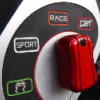
Wet Set Up
#21

Posted 03 November 2014 - 12:05 PM
#22

Posted 03 November 2014 - 12:31 PM
go up psi , you want to make sure the sidewall is supported so all the force energy goes into the tread block movement and gives you compound heat.
generally the more load, the more internal pressure needed
#23

Posted 03 November 2014 - 01:47 PM
Edited by chris_uk, 03 November 2014 - 01:48 PM.
#24

Posted 03 November 2014 - 01:55 PM
Edited by PaulCP, 03 November 2014 - 01:57 PM.
#25

Posted 03 November 2014 - 01:56 PM
I take psi out, to keep the tyre wear more even , rather than overheat the middle tread.
#26

Posted 03 November 2014 - 01:58 PM
#27

Posted 03 November 2014 - 02:00 PM
Ah fcuk knows .... *throws everything on desk into air* Serioisly tho.. Ive always understood you lower the psi to generate heat.Don't you lower the pressure in the dry to reduce heat. That's why on 888s & ZZRs you aim at 28-30 (although some like to run lower) hot, anything above results in the tyre over heating
#28

Posted 03 November 2014 - 02:03 PM
it will overheat the sidewall yes
#29

Posted 03 November 2014 - 02:03 PM
Edited by chris_uk, 03 November 2014 - 02:05 PM.
#30

Posted 03 November 2014 - 02:25 PM
You're seeking to analyse a complex subject. Tyre performance is the product of numerous variables. We can state a certain pressure is ideal for a certain tyre in certain conditions, but it's subjective as well. Toyo advise 30psi for 888 hot. Pressures are stated hot as that is when the tyre is performing at its best. The starting pressure to achieve the optimum pressure is another question again, which becomes more complex when you race and can only set the pressures cold, but need to determine how long the tyre will take to reach an operating temperature and how long will it remain within its operating window.
The example you give above may be accurate for a dry track, but will not apply to a wet track, when a reduced contact patch can give superior grip. The advice I gave was first passed to me by Pete Smith, ex Legends, ex LoT instructor and ex car sharer with a certain John Thorne.
You reduce pressure on snow, but that's to maximise traction by allowing the tread to deform to the uneven surface.
#31

Posted 03 November 2014 - 03:03 PM
Edited by PaulCP, 03 November 2014 - 03:06 PM.
#32

Posted 03 November 2014 - 03:16 PM
#33

Posted 03 November 2014 - 06:02 PM
Edited by chris_uk, 03 November 2014 - 06:07 PM.
#34

Posted 03 November 2014 - 06:20 PM
Edited by PaulCP, 03 November 2014 - 06:22 PM.
#35

Posted 03 November 2014 - 06:23 PM
#36

Posted 03 November 2014 - 06:30 PM
Edited by PaulCP, 03 November 2014 - 06:31 PM.
#37

Posted 03 November 2014 - 06:41 PM
yeah.. ![]() .. i was working on the principle that a lower psi would increase the temps (which it does, just not in the right place) and because temps are what controls the tyres ability on track this is what i needed to do. however i don't fully agree with he reasons P gave, i don't believe that a smaller contact patch will give "superior grip" over a larger one if the larger patch can displace the water it needs.
.. i was working on the principle that a lower psi would increase the temps (which it does, just not in the right place) and because temps are what controls the tyres ability on track this is what i needed to do. however i don't fully agree with he reasons P gave, i don't believe that a smaller contact patch will give "superior grip" over a larger one if the larger patch can displace the water it needs.
#38

Posted 03 November 2014 - 08:28 PM
#39

Posted 03 November 2014 - 08:49 PM
Edited by Andy_VX, 03 November 2014 - 08:51 PM.
#40

Posted 03 November 2014 - 09:05 PM
2 user(s) are reading this topic
0 members, 2 guests, 0 anonymous users

















